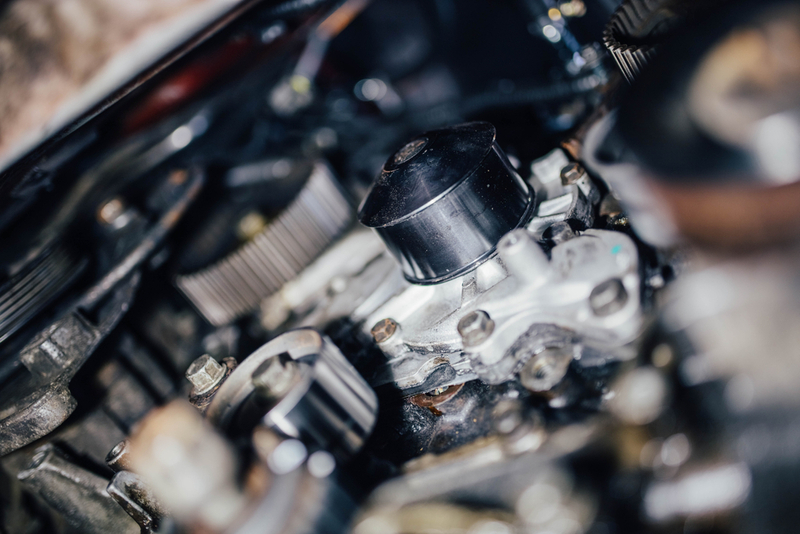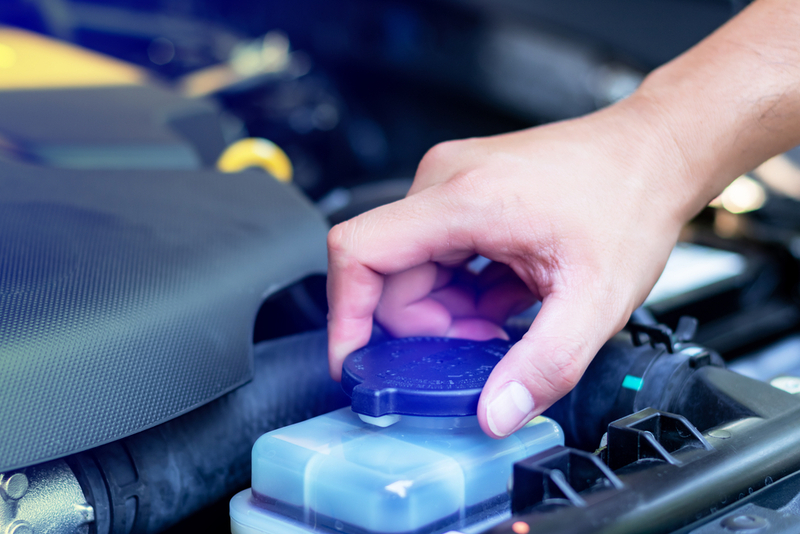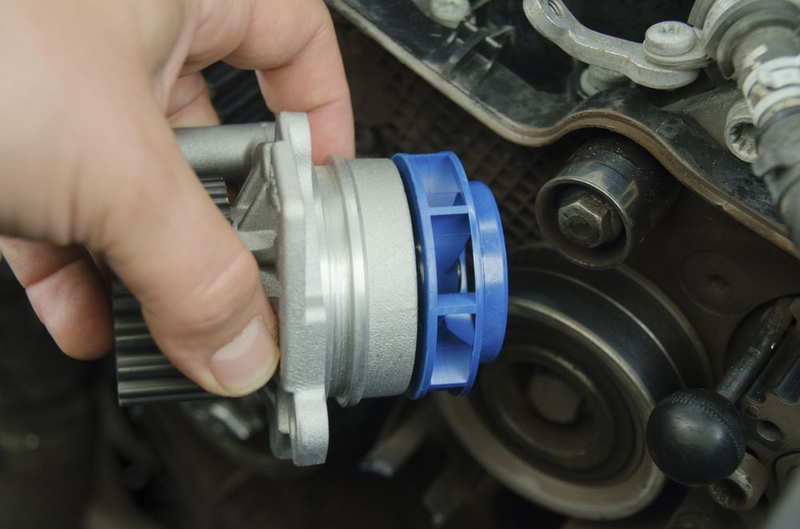The engine of a car gets very hot when when driven for a period; therefore the need for a cooling system embedded in the engine. This cooling system uses a working fluid called a coolant and a heat exchanger, usually called the radiator and the water pump.
What are the signs of a bad water pump? In a nutshell, your cooling system will not work if your water pump fails. If your cooling system fails to function properly due to a bad water pump, your car will overheat and could result to more disaster.
This article will teach you all you need about vehicle water pumps, how to identify the signs of a bad water pump, and then take preventive measures before it does escalate.
Let’s dive in!
How Does the Water Pump Work
The water pump is a mechanical device in the engine that ensures constant coolant flow from the radiator to the engine.
In addition, it also regulates the amount of coolant entering and leaving the engine and ensures that the engine is continually cooled down by fresh coolant.
The water pump must be in good working condition for any vehicle’s water-cooled engine to remain functional. The engine powers the water pump via the serpentine belt, which transmits power from the crankshaft to the pump.
As with every other mechanical device, the water pump will show signs of weakness before it fails; it is the responsibility of the driver or mechanic to take note and take necessary actions.

What is the Function of the Water Pump in a Car?
As explained earlier, the water pump is crucial to maintaining a vehicle’s allowable operating temperature. Whenever an internal combustion engine starts running, it produces energy through the fuel explosion in the combustion chamber. These repeated explosions cause the temperature of the engine to rise quickly.
The engine gets so hot that it relies on its cooling system to maintain its temperature. The cooling system uses the coolant and radiator to exchange the heat produced by the engine with the surrounding.
However, for this exchange to be possible, the coolant must constantly flow from the engine to the radiator and back to the engine.
This flow path is only possible if a pump transfers energy to the coolant to cause it to move continually.
Therefore, the pump’s primary function is maintaining the engine coolant flow.
However, the water pump also has the secondary function of regulating the quantity of coolant flowing in and out of the engine and ensuring that there is no backflow of coolant in the cooling system.
You must also understand that the water pump is a mechanical device and is susceptible to wear and tear over time, causing it to fail. However, before the water pump fails, it will show certain signs.
The water pump is so important to the engine’s cooling that it will cease functioning without properly working. Suppose the water pump develops minor issues; your driving experience will become very uncomfortable as your vehicle will overheat from time to time and, at some point, just shut down.
Therefore whenever you start observing signs of a bad water pump, it is best to employ the services of an expert or visit your local mechanic.
Also Read: How to Remove Power Steering Pump Pulley Without Puller
What Are the Signs of Bad Water Pump
A faulty water pump can cause your engine to stop working due to overheating; however, a failing water pump displays some warning signs.
Here are some of the signs you will observe when a water pump starts failing;
Reduction in Coolant Level
Low coolant levels are another symptom you would begin observing whenever you have a bad water pump. Since the water pump is a mechanical device and is prone to failure due to wear and tear, points of leaks can be formed where the coolant will escape from and cause the coolant level to drop.
You might not see a puddle if the crack or origin of the leak is tiny; however, the coolant levels will keep dropping gradually. Draining the cooling system and getting the water pump fixed is always wise.
You may Hear a Whining Sounds
The water pump receives power from the engine’s crankshaft to function, which is transmitted through a belt pulley system.
Whenever the water pump pulley starts developing a fault, the serpentine belt transferring power to it finds it difficult to turn the water pump pulley; this struggle will cause whining noises and increased friction around the pulley.
Over time the tension around the water pump pulley might reduce and cause it to produce buzzing sounds. However, this symptom is one of the best signs of knowing that your water pump is failing.
At this point, the only way to fix the bad water pump is to replace it with a new one.
The Pump Starts Rusting
The coolant used in the cooling systems of engines I made with a high percentage of water, therefore since the pump is usually made of iron-based materials, the high moisture in the coolant, in conjunction with air from a crack or leak, will attack the iron molecules in the water pump and cause rusting.
When this happens, you will observe the formation of cavities and pits on the water pump.
Fixing this problem will require draining the cooling system and replacing the water pump.
Your Engine Begins to Overheat
Another symptom that will most likely be noticed by observing drivers is a sharp rise in the engine temperature. Although a temperature rise can be caused by a shortage of engine oil, a faulty water pump is another reason your engine is getting hotter.
Whenever you experience a significant temperature rise, you should take your vehicle for a checkup as soon as possible. A proper diagnosis will be made, and the problem will be fixed.

You Notice Coolant Leaks
There are many symptoms that a failing water pump will display; however, there is none as obvious as a leakage of coolant at the front part of the vehicle. Coolant leakage is caused by excessive wear or structural damage to the water pump.
Usually, the puddle caused by the leakage will be the same color as your coolant, and you will see the puddle majorly at the front part of your car, indicating that it is coming from your engine’s cooling system.
To fix the leakage, you must flush the cooling system and fix the structural damage on the water pump or replace it entirely before refilling it with coolant.
Alternator Produce Steam
A bad water pump can also cause your vehicle’s engine to heat up, so steam starts coming out of your vehicle’s alternator. Whenever you experience this symptom, you should know that your water pump is in critical condition and can cause your engine to stop working at any time.
It is wise to employ the services of an expert to diagnose and fix any problem relating to the water pump and also other problems that the faulty water pump cause.
Where Can I Locate the Water Pump
The water pump is usually located close to the serpentine belt or the timing belt, depending on which of them Powers the pump.
How Much does it Cost to Fix a Bad Water Pump
Replacing a bad water pump with a new one costs you between $400 to $900, depending on the model of the car you drive.
Also Read: Temporary Fix for Exhaust Manifold Gasket Leak
Frequently Asked Questions – Signs of Bad Water Pump
How long do water pumps last?
A new water pump is an average lifespan of about 75,000 miles with proper care and maintenance.
Can I drive with a noisy water pump?
Driving with a noisy water pump is not advisable as it can fail anytime.
How long does it take to change a water pump in a car?
Fixing a water pump can take about 2 to 6 hours.
Conclusion – Signs of Bad Water Pump
Water pumps are crucial to the functionality of the engine’s cooling system and must always be maintained properly. A faulty water pump can cause serious issues for your vehicle, including overheating and unpleasant noises. Water pumps can feel at any time and cause accidents; however, reading this article should help you understand the symptoms of a bad water pump.

